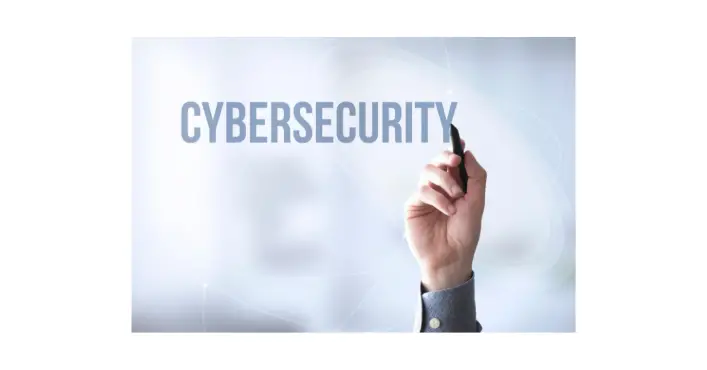Organizations face an ongoing challenge to protect their systems and data in cybersecurity.
As cyber threats become increasingly sophisticated and prevalent, there is a critical need for a structured approach to manage these risks.
This brings us to the National Institute of Standards and Technology (NIST) Cybersecurity Framework—a guide businesses across various sectors use to address cybersecurity risks systematically.
This framework, built upon five key components of Identify, Protect, Detect, Respond, and Recover, is a strategic tool to understand, communicate, and manage cybersecurity risks effectively.
We explore the essence of these components and delve deeper into each of the 14 critical Risk Indicators identified by the NIST Framework to fully understand their significance in managing cybersecurity risks.
Overview of NIST Framework
Decoding the Structure and Purpose of the NIST Cybersecurity Framework
Renowned globally for its practicality and comprehensibility, the National Institute of Standards and Technology (NIST) Cybersecurity Framework is a blueprint for organizations to manage and mitigate cybersecurity risk.
Devised to align policy, business, and technological approaches to address cyber threats, the voluntary framework offers industry standards, guidelines, and practices to augment an organization’s cybersecurity stance.
Designed to be industry-agnostic, the NIST Cybersecurity Framework aims to facilitate communication of cybersecurity issues among technical and non-technical staff and enable organizations to comprehend their current cybersecurity posture, identify risks, and devise an action plan to mitigate them.
Core Structure of the NIST Cybersecurity Framework
The NIST Cybersecurity Framework comprises three segments: the Core, Profiles, and Tiers.
- Core: The Core enumerates key cybersecurity activities, desired outcomes, and relevant references, divided into five concurrent and continuous functions: Identify, Protect, Detect, Respond, and Recover. Each function is segmented further into categories and subcategories to specify the outcomes of each activity.
- Profiles: These represent the alignment of the Framework Core to an organization’s specific management needs, risk threshold, and resources. By mapping its current state (Current Profile) and the desired state (Target Profile), gaps can be identified, allowing the development of action plans to reach the target profile.
- Tiers describe an organization’s cybersecurity risk management processes, marked along a scale from ‘Partial’ (Tier 1) to ‘Adaptive’ (Tier 4). Higher tiers indicate comprehensive management of cyber risks.
Purpose of the NIST Cybersecurity Framework
The Framework serves multiple objectives:
- It allows organizations to apply risk management principles and best practices to improve cybersecurity. Implementing the Framework supports the integration of cybersecurity risk into an organization’s overall risk management process.
- The Framework promotes communication with stakeholders and across organizations, thereby building a common language and understanding related to cybersecurity risks and management planning.
- It offers a method to identify and prioritize cybersecurity improvement actions within a continuous and iterative process.
- The Framework promotes alignment with business objectives, laws, regulations, and external requirements, ensuring the cybersecurity strategy supports organizational needs.
In a world where cyber threats are evolving and multiplying at a dizzying pace, NIST’s Cybersecurity Framework acts as a robust, flexible, and scalable guide for organizations to shield their digital assets effectively.
It consolidates cybersecurity policy, business, and technology, ensuring they work together to culminate in a resilient organizational environment robust enough to tackle the ever-present, continually burgeoning menace of cyber threats.

Understanding the 14 Risk Indicators
In this journey of exploring the NIST Cybersecurity Framework, now that we have covered its purpose, structure, components, and benefits, it is time to delve into the key cyber risk indicators as outlined by the National Institute of Standards and Technology.
Code-named Indicators of Compromise (IoCs), represent the identifying attributes or characteristics providing evidence of potential cybersecurity threats.
These indicators allow organizations to continually assess their risk posture, aiming to proactively identify, manage, and mitigate risks before any incidents occur.
The 14 core cybersecurity risk indicators within the NIST Framework include:
- Physical and Logical Access Control: This involves restricting and protecting both physical and digital access to sensitive information systems, providing a dual security barrier against unauthorized users.
- Secure Configuration Management: Ensures that configurations of systems are consistent, secure, and correctly documented, reducing the exposure of security holes or vulnerabilities.
- Identifier and Authentication Management: These controls aim to ensure that only authorized individuals have access to systems, sealing any loopholes that could allow unauthorized access to sensitive data.
- Network and Information Flow Security: A critical risk indicator, it concerns the management of information flow and interconnections across the network.
- Incident Response and Management: This involves measures set up to respond swiftly and efficiently whenever a security incident occurs.
- Data Protection Policy Compliance: Standards that ensure adherence to an organization’s internal data protection policy and regulatory compliance.
- Training and Awareness Programs: This refers to creating and implementing cybersecurity education programs for staff to recognize potential threats and learn preventative behavior.
- Asset, Change, and Configuration Management: This involves understanding and controlling all devices and software to prevent unauthorized changes or breaches.
- Identity, Credential, and Access Management: Key indicators that protect from breaches by ensuring only authorized users can access certain resources.
- Risk Assessment Process: This involves identifying, estimating, and prioritizing risks to influence decision-making.
- Protection Process and Procedures: Refers to the defensive measures implemented to protect the information system.
- Maintenance and Repairs of Information Systems: This includes applying patches, updates, and repairs to maintain the stability and security of all systems.
- Security Continuity of Operations: Established to ensure the company continues operating securely even during a disruption or outage.
- Auditing and Accountability: This entails consistent logs and independent verifications conducted to confirm that all security processes and measures are effective.
All these indicators align with the five key functions of the NIST Framework (Identify, Protect, Detect, Respond, Recover), painting a holistic picture of an organization’s cybersecurity climate.
Organizations can protect themselves from cyber attacks by focusing on key areas, safeguarding integrity, trust, and their bottom line.
The rapid evolution of cybersecurity threats means that utilizing these indicators in conjunction with the NIST Framework provides a strong defense against potential threats, allowing organizations to proactively manage cybersecurity risks.

Implementing NIST Framework Based on Risk Indicators
Adopting and implementing the NIST framework in an organization involves operationalizing the offering’s core functions – Identify, Protect, Detect, Respond, and Recover – in a comprehensive yet agile way.
Using risk indicators while maintaining this balance will form the crux of our discussion.
Risk indicators give a strategic direction to cybersecurity efforts. For example, physical and logical access controls constitute the initial gatekeeping role in an organization’s cybersecurity defense lines.
The effectiveness of these controls can be assessed using a risk indicator like the number of unsuccessful access attempts over a specific period.
In response to a consistently high number, organizations can improve their security measures around access control and user credentialing, thus better aligning to the ‘Identify’ function of the NIST Framework.
Secure configuration management is another pillar of a robust cybersecurity infrastructure. Suppose there are persistent instances of unauthorized changes in system configurations.
In that case, this risk indicator might reflect defective protective measures in place, thus requiring dedicated attention under the ‘Protect’ function of the NIST framework.
Network and information flow security largely revolves around data privacy and protection. Frequently detected network intrusions or information leakage events represent risk indicators that call for improvement under the ‘Detect’ function of the NIST Framework.
This could drive the need for more robust firewall configurations or enforce stricter data encryption methods.
Incident response and management take center stage regarding the ‘Respond’ function of the NIST framework.
So, if the turnaround times in addressing cybersecurity incidents remain consistently high, it’s a risk indicator pointing towards procedural inefficiencies that require immediate rectification, perhaps through automation or improving communication lines.
Next, the ‘Recover’ function relies heavily on effective backup methods and a systematic approach to disaster recovery.
If the recovery time objectives are not met in disaster simulation exercises, it is an indicator of weak resilience measures. Organizations should then look to iron out these kinks in their continuity plans.
The remaining risk indicators – training & awareness, asset management, risk assessment, protection processes, maintenance & repairs, continuity of operations, and auditing & accountability – all serve as areas of potential exposure needing alignment with the NIST framework’s core functions.
Effective implementation of the NIST framework, therefore, should involve utilizing these risk indicators as guiding lights for actionable improvements, which in turn propel an organization towards a smoother digital transformation journey.
This list of risk indicators is not exhaustive, but it provides a solid baseline for understanding how the NIST framework can be applied with the help of relevant metrics.

Case Study: Successful NIST Framework Implementation
Now let’s channel our tech enthusiast side and delve into real-world successes of implementing the NIST Cybersecurity Framework.
Remember, actions speak louder than words, so let’s take a glimpse at some organizations that have walked the talk when it comes to cybersecurity.
Let’s first zoom in on a financial institution in the US, where security, data integrity, and trust are paramount. Adopting the NIST Framework, they worked to enhance their already robust cyber defense strategies.
Highlights of their success include a significant reduction in risk factor ratings due to a boost in their Identify and Protect functions, a major drop in instances of unauthorized access, and an improved speed in their Respond and Recover functions.
This effectively increased operational efficiency while driving down costs due to breaches. A shining example of how the NIST Framework can facilitate a fortified cybersecurity system.
Shifting our focus to a tech giant, CyberLock, the company needed a solution that could scale up to their growth and protect their vast array of digital assets. Enter the NIST Framework.
CyberLock strategically tamed its complex security landscape and reinforced its Protective and Detective functions through its implementation.
The result? Their risk assessments became more accurate, exposure to potential threats decreased, and they were able to adapt their defenses against rapidly evolving cybersecurity threats swiftly. Tech enthusiasts would certainly tip their hats off to CyberLock‘s expansive and sophisticated use of the NIST Framework.
The tech world isn’t complete without a nod to startups, so let’s put the spotlight on Extrahop, a network detection and response company.
Even with a smaller scale, the firm hasn’t shied away from investing in a robust cybersecurity framework. Implementing the NIST Framework has profoundly bolstered its Identify, Protect, and Detect functions.
Specifically, they’ve optimized their secure configuration management and data protection policy compliance. Demonstrating that even in the startup world, security isn’t an option but rather an absolute necessity.
Even government agencies have joined the NIST Framework brigade. The US Department of Health and Human Services (HHS) utilizes the framework to strengthen its cyber defense system and maintain public trust.
For HHS, the framework was instrumental in fortifying a well-rounded cybersecurity process. Their spectacular success came in the form of streamlined incident management, honed risk assessment procedures and enhanced protective measures across different departments within the organization.
Showcasing real-world scenarios emphasizes that the NIST Cybersecurity Framework is not simply a theoretical or academic model.
It is a practical, efficient, and adaptable tool that has produced undeniable benefits across an array of organizations. The breadth of its utility only solidifies its status as a cardinal piece in the cybersecurity puzzle.
Proof of its effectiveness isn’t confined to the tech corridors of Silicon Valley; it extends across industries, from financial institutions to government bodies, and even reaches ambitious startups.
The echo of its success reverberates in the reduced risk scores, optimized operations, and robust defenses against cyber threats.
While the language of technology is continuously evolving, the NIST Cybersecurity Framework perches on its pedestal as a pivotal instrument for ensuring safe digital operations in an increasingly connected world.
Its adaptability and robustness make it an indispensable tool; these real-world success stories serve as tangible proof. Regardless of the organization’s size, industry, or digital depth, the perks of utilizing the NIST Framework remain universally beneficial.
But that’s enough from us; the examples provided speak volumes. Hold on to your hats, tech enthusiasts; cybersecurity is no longer the future—it’s the here and now.

Conclusion
The NIST Cybersecurity Framework, bolstered by its key risk indicators, offers a dynamic model that organizations can adapt to their unique needs and risk contexts.
Explicit real-world instances demonstrate the Framework’s practicality and adaptability, underlining its effectiveness in strengthening cybersecurity posture.
At its core, the NIST Framework encourages an adaptive approach that anticipates the shifting cyber terrain, ensuring that proactive measures are already in place to address potential future threats.
Organizations can enhance resilience against cyber threats with this Framework’s risk indicators, ensuring secure systems and data in the digital landscape.

Chris Ekai is a Risk Management expert with over 10 years of experience in the field. He has a Master’s(MSc) degree in Risk Management from University of Portsmouth and is a CPA and Finance professional. He currently works as a Content Manager at Risk Publishing, writing about Enterprise Risk Management, Business Continuity Management and Project Management.

